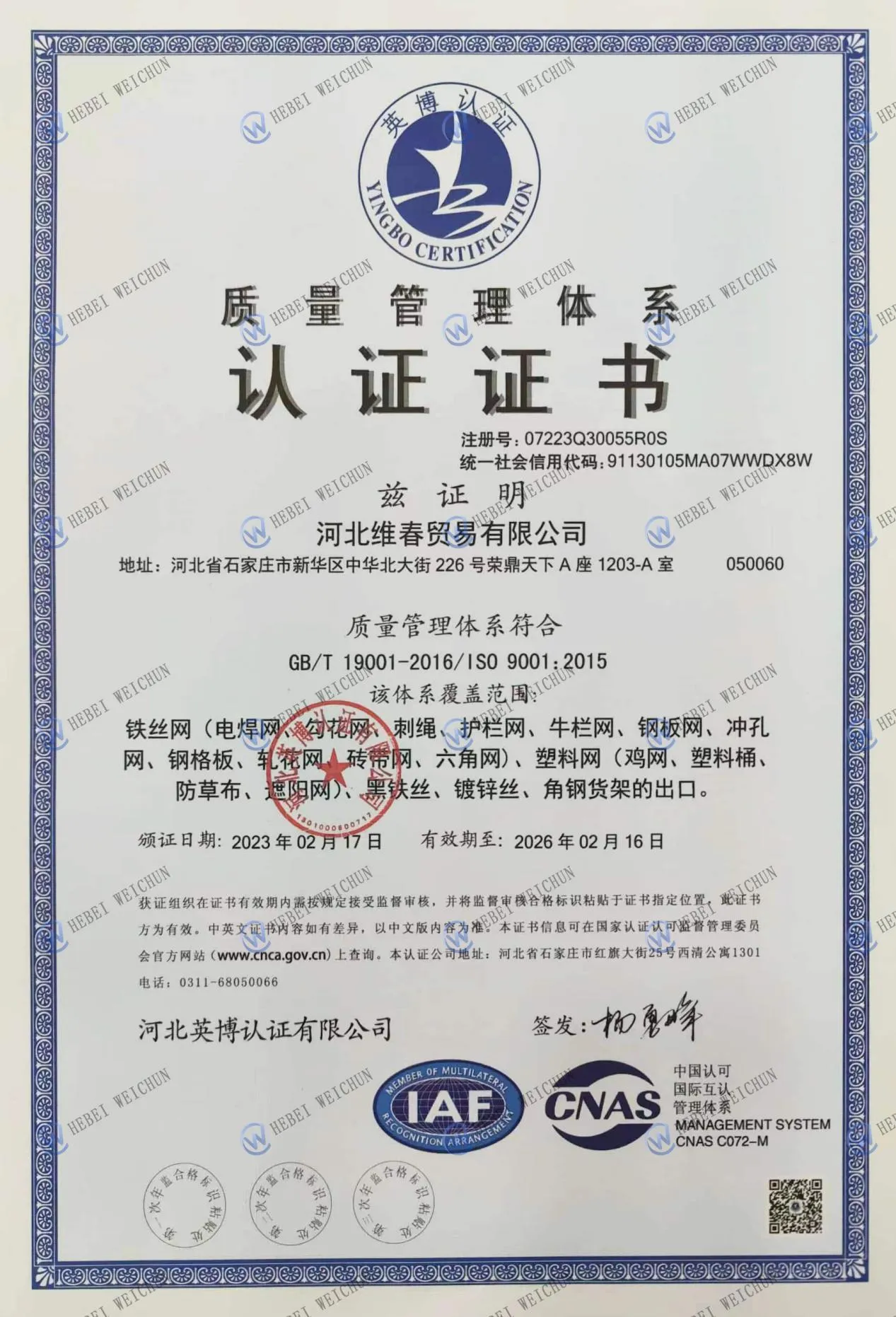-
+86 15030157877
-
sales@galvanizedmetalmesh.com
Sep . 28, 2024 22:05 Back to list
Creative Birdcage Wire Mesh Designs for Stylish Avian Habitats and Functional Decor
The Versatile World of Bird Cage Wire Mesh
Bird cage wire mesh plays a crucial role in the design and functionality of habitats for our avian friends. The materials used to create this mesh combine durability, flexibility, and safety, ensuring that birds are both secure and comfortable within their living environments. As pet ownership trends continue to rise, understanding the importance of quality wire mesh in bird cages becomes increasingly essential for bird enthusiasts and breeders alike.
Material Matters
The primary materials used for bird cage wire mesh are typically stainless steel, galvanized steel, aluminum, or coated wire. Each type has its own set of advantages. Stainless steel, for instance, is renowned for its strength and resistance to rust and corrosion, making it an ideal choice for long-term reliability. This durability ensures that the cage can withstand the test of time, even when exposed to harsh environmental conditions or the wear and tear caused by bird activity.
Galvanized steel offers an economical alternative. It is coated in zinc, which helps prevent rusting, making it suitable for indoor or outdoor cages. Aluminum mesh is lightweight and resistant to corrosion, but it may not be as robust as stainless steel or galvanized options. Lastly, coated wires provide an extra layer of protection, reducing the risk of injury to birds while maintaining aesthetic appeal.
Safety First
When selecting wire mesh for bird cages, safety should always be the top priority. The spacing of the wire mesh openings is critical; it must be small enough to prevent birds from escaping or becoming trapped. Standard spacing for smaller birds, like finches or canaries, typically ranges from ½ inch to ¾ inch, while larger birds, such as cockatoos or macaws, may require openings of an inch or more to prevent them from getting their heads stuck.
In addition to spacing, the gauge (or thickness) of the wire plays an essential role in safety. Thicker wires are less likely to bend or break under pressure, which is vital for containing larger or more energetic birds. In contrast, thinner wires might suffice for small, less active species. Careful consideration of these factors ensures that canaries, parrots, and other birds live safely within their cages.
bird cage wire mesh

Designing the Perfect Habitat
Beyond safety and durability, the design of the wire mesh contributes to the overall comfort and mental well-being of birds. Open mesh designs allow for good airflow and ample natural light, creating a healthy environment for inhabitants. Additionally, wire mesh is easily customizable, allowing bird owners to create cages with specific dimensions and shapes that suit their home’s aesthetic and the needs of their birds.
The visibility provided by wire mesh surfaces keeps the birds connected to their surroundings, fostering a sense of security. Birds are naturally curious creatures, and a well-designed cage can stimulate their senses, providing opportunities for exploration. Accessories such as perches, swings, and toys can be easily integrated into a wire mesh design, transforming a simple cage into an engaging habitat.
Environmental Impact
Another consideration is the environmental sustainability of the materials used. As awareness of ecological issues grows, many manufacturers are now opting for recycled materials or sustainably sourced options. Choosing bird cages made from eco-friendly wire mesh not only benefits the birds but also promotes a healthier planet.
Conclusion
In conclusion, bird cage wire mesh is an indispensable aspect of creating safe, durable, and engaging environments for birds. By understanding the various materials, safety guidelines, and design elements relevant to wire mesh, bird owners can ensure their feathered companions thrive. Ultimately, investing in high-quality wire mesh reflects a commitment to the health and happiness of birds, enriching the human-animal bond in meaningful ways.
-
Stainless Steel Wire Mesh Roll Wholesale & Manufacturers – Quality Exporters
NewsJul.26,2025
-
High Quality 3D Curved Welded Wire Mesh Fence for Security and Aesthetics
NewsJul.25,2025
-
High-Quality Security Window Screen Mesh for Home & Office Protection
NewsJul.24,2025
-
Hexagonal Gabion for River Bank Protection and Retaining Walls
NewsJul.23,2025
-
High Quality Stainless Steel Wire Mesh Roll & Supplier Wholesale Price
NewsJul.22,2025
-
Hexagonal Gabion Mesh: Durable Stone Cages for Landscaping
NewsJul.22,2025



